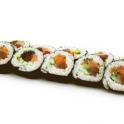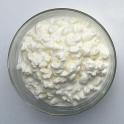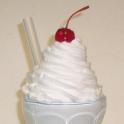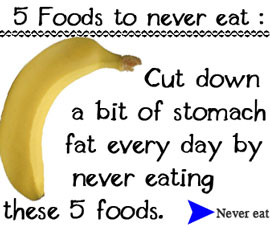When it comes to picky sushi eaters, no roll is more satisfying than the rainbow roll. When you can decide what type of fish you want, the rainbow lets you have plenty of options.
Made with thin layers of fish that includes Hamachi, ebi, salmon, tuna and plenty of other types of fish depending on where your favorite sushi joint is located. The rainbow roll is as colorful—and delicious—as its name indicates.
Let’s take a closer look at rainbow roll nutrition facts.
Major Nutrients Found In A Rainbow Roll
The rainbow roll nutrition chart above shows you that sodium is the only truly worrisome factor. The calories in a rainbow roll shouldn’t cause you to be concerned—as long as you don’t eat more than one rainbow roll per sitting. There are enough good things like fiber, calcium and a whopping 31 grams of protein, to make you feel good when you bite into a rainbow roll.
Storing/Selecting
Because the rainbow roll is topped with thinly sliced raw fish, you should order or make only what you can eat. Eating raw fish that has gone bad can lead to serious—and seriously embarrassing—health problems, so eat your rainbow roll as fresh as possible.
Store your rainbow roll in the refrigerator for a few hours, but no more. The whole point of eating a delicious rainbow roll is to enjoy its freshness, so again freshness is of the essence here.
Eat It With:
The traditional way to rainbow a roll is with the traditional wasabi-soy sauce-ginger mixture common to most types of sushi. Some sushi restaurants make their own sauce with sake for rainbow rolls, so ask what’s new for my rainbow roll?
Burn Off Calories In A Rainbow Roll
To burn off the calories in a rainbow roll, you would have to complete:
- 40 minutes of rollerblading
- 57 minutes of jogging
- 120 minutes of golf (with a cart)
















